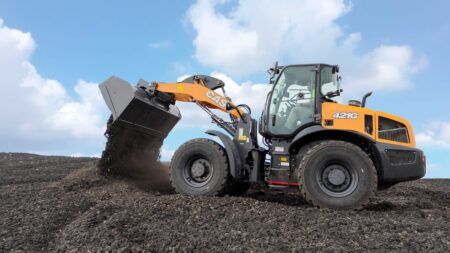Ecomotive Solutions, a specialist in engine calibration, has capitalized on market interest in its d-gid platform for the transformation of purely diesel-fuel vehicles into dual-fuel, with the conversion of a Kalmar RTG crane at the Port of Livorno, Italy, as a part of the Sea Terminals project.
The goal of the Sea Terminals project is to encourage a new culture of port management by introducing eco-efficiency as a key factor, through the reduction of pollutant emissions from all of the vehicles used to move goods. In this specific case, the transformation that Ecomotive Solutions carried out in collaboration with Global Service, a technical services company for port vehicles, involved a Kalmar RTG crane with a Cummins engine operating at the Terminal Darsena Toscana in Livorno.
The Kalmar vehicle was converted from purely diesel to dual-fuel, powered by diesel and liquid methane (LNG). The conversion took place through the installation of Ecomotive Solutions’ d-gid (diesel-gas dynamic injection) platform, as well as the insertion of a dedicated tank for storing 600 liters of liquid methane, which was built by the HVM company in Livorno, and of the complete line set up to transfer gas from the cryogenic tank to the engine, which is another Ecomotive Solutions product.
The return on operating costs proved to be significant, with a 23.8% savings on fuel based on the cost of diesel fuel at 1/liter (US$1.14/liter), and methane at 0.79/kg (US$0.90/kg).
The environment benefits as well with a decrease in particulate emissions and CO2 after the conversion; tests conducted on similar engines indeed demonstrated a 10% reduction of CO2 and up to 40% less in particulate.
The d-gid Dual Fuel platform developed by Ecomotive Solutions is capable of fuelling a diesel engine simultaneously with a mixture of gas (methane biomethane stored in both compressed CNG form and liquid LNG, as well as GPL, syngas, hydromethane, etc.) and diesel.
Application of the d-gid system does not in any way change the nature of the diesel engine, maintaining the initial performance and efficiency; moreover, in the absence of availability of gas, the system automatically returns to operate on 100% diesel.
April 8, 2016




